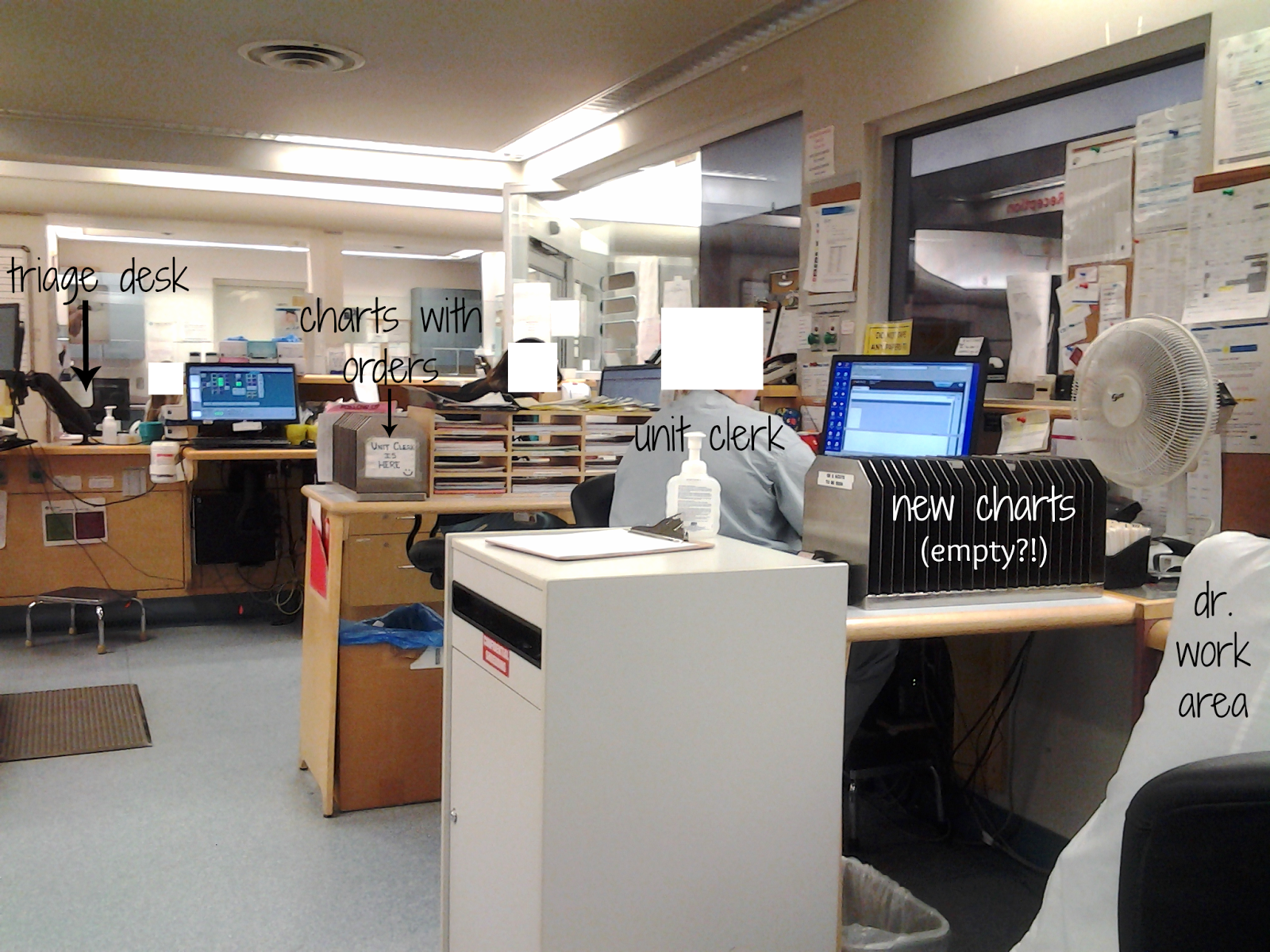Switching from internal medicine to working in the ER has required a 180 in terms of how I approach patient cases. In the ER, the primary objective is to rule out that the patient is experiencing anything life-threatening (heart attack, blood clot, stroke, etc.) -- and when that's done, to determine whether they are appropriate for discharge home.
This "rule out" approach means that we often are not able to tell a patient specifically what their diagnosis is, just that everything checks out fine and their "chest pain NYD" may just be from anxiety or reflux and that they should please follow up with their GP. Sometimes the patient is not impressed with this lack of diagnosis and we get to practice our people skills (and patience) in reassuring and acknowledging frustration.
In some cases we're unable to pin down what's happening with a patient and they're too sick to be sent home -- those patients need a more detailed workup, for which we admit them to the internal medicine service.
 |
| the emergency department one snowy evening |
I meet the ER doctor who is scheduled to work the same shift as me -- I'll review each of my cases with him or her before I send the patient home.
I log into the Emergency Department Information System (EDIS), which keeps track of the patients currently in the ER. Whenever I pick up a chart I need to remember to sign up for that patient on EDIS.
 |
| no fractures for once -- clearly not an icy day! |
 |
| the ER work area |
 |
| Rapid Assessment Zone (RAZ) -- where we briefly assess well patients from the waiting room, before sending them back out to wait for test results |
For each patient I see, I document the encounter carefully on their paper chart, which is scanned into the electronic medical record. It's important to tell every patient the warning signs for when they should return to the ER (basically if they get a lot worse!) -- and to document that you've told them this on their chart.
One of the most challenging things in the ER is keeping track of all the patients you've seen and where things are at with each one of them. Each shift I start a piece of paper where I stick ID stickers of the patients I've seen and beside each write checkboxes of what remains to be done (e.g. check bloodwork, x-ray, prescription). I stop between each case to look over the list and see what has changed. Most patients have been waiting for a few hours already by the time we see them, so I'd hate to keep them waiting longer because I forgot to check to see if their bloodwork was back!
 |
| most of the ER beds are filled with admitted patients because there is no room for them up on the wards... which means we can't use the ER beds for ER patients... |
 |
| ...which is why the chart holder is empty...and the waiting room is full :( |


No comments:
Post a Comment